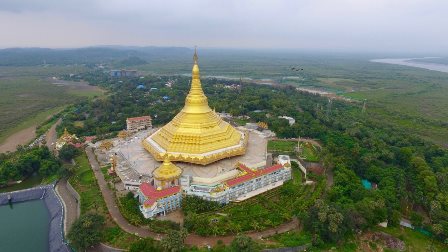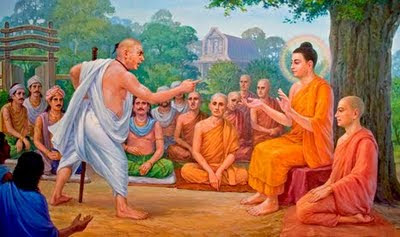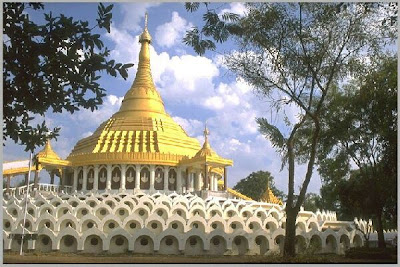Kammassakā, bhikkhave, sattā kammadāyādā, kammayonī, kammabandhū, kammapaṭisaraṇā, yaṃ kammaṃ karonti—kalyānaṃ vā pāpakaṃ vā—tassa dāyādā bhavanti
A.N. 3.10.216 (Samsappaniyasuttam)
The law of Paṭicca Samuppāda (Dependent Origination) is the universal law of cause and effect: As the action is, so the result will be. Mental volition is the driving force for action at the vocal or physical level. If this driving force is unwholesome, the resultant vocal and physical actions will also be unwholesome. If the seeds are unwholesome, the fruits are bound to be unwholesome. But if this driving force is wholesome, the resultant actions are bound to be wholesome.
For a Vipassana meditator who develops the ability to observe this law at the level of direct experience, the answer to the question “Who am I?” becomes very clear. You are nothing but the sum total of your kamma, your saṅkhārā (mental conditionings). All your accumulated actions together equal “I” at the conventional level.
Kammadāyādā: Beings are the heirs of their deeds.
In the worldly, conventional sense, one says, “I received this inheritance from my mother or my father or my elders.” At the apparent level this is true—but what is one’s real inheritance? Kammadāyādā—one inherits one’s own kamma, the results, the fruits of one’s own kamma. Whatever you are now, the present reality of this mind-matter structure is nothing but the sum total of and the result of your own accumulated past kamma. The experience of the present moment is the sum total of all you have inherited—kammadāyādā.
Kammayonī: Beings are born of their deeds.
One says, “I am the product of a womb, I have come from the womb of my mother,” but this is only apparent truth. Actually, your birth is because of your own past kamma. You come from the womb of your own kamma. As you start understanding Dhamma at a deeper level, you realise this. This is kammayonī, which produces the fruit of the accumulated past kamma every moment.
Kammabandhū: Beings are the kin of their deeds.
None other is your relative—not your father, mother, brother, sister or friend. In the worldly way we say, “This is my brother, my relative or my near or dear one; they are so close to me.” Actually, no one is close to you; no one can accompany you or help you when the time comes. When you die, no one accompanies you other than your kamma. Whoever you call your relatives remain here but your kamma continues to follow you from one life to another. You are not in possession of anything but your own kamma. It is your only companion.
Kammapaṭisaraṇā: Their deeds are their refuge.
The only true refuge is in one’s own kamma. Wholesome kamma provides a refuge; unwholesome kamma produces more suffering. No other being can give you refuge. When you say “Buddhaṃ saraṇaṃ gacchāmi—I take refuge in the Buddha,” you understand fully well that the person by the name of Gotama the Buddha cannot give you refuge. Your own kamma gives you refuge. Nobody can protect you, not even a Buddha. Refuge in Buddha is refuge in the quality of Buddha, in his enlightenment, in the teaching that he gave. By following the teaching, you can develop enlightenment within you. And the enlightenment that you develop within you, that is your wholesome kamma. This alone will give you refuge; this alone will give you protection.
Yaṃ kammaṃ karonti—kalyānaṃ vā pāpakaṃ vā—tassa dāyādā bhavanti: Whatever actions beings perform, whether wholesome or unwholesome, such will be their inheritance.
This law of nature should become very clear. Then you will become inspired to take responsibility for your own kamma.
Remain alert and on guard each moment, so that every action, physical or mental, is wholesome. You will not be perfect but keep trying. You may fall down but see how quickly you get up. With all the determination, with all the inspiration, with all the encouragement, get up and try again. This is how you become stable in Dhamma.
Bhavatu sabba maṅgalaṃ—May all beings be happy!
(original article from Vipassana Newsletter http://www.vridhamma.org/en2007-07
----
* Vipassana meditation courses worldwide, course venues, online application for Vipassana courses
* Directions to reach Global Pagoda, Gorai / Borivili, Mumbai
* Benefits of Pure Volition of Dāna



















